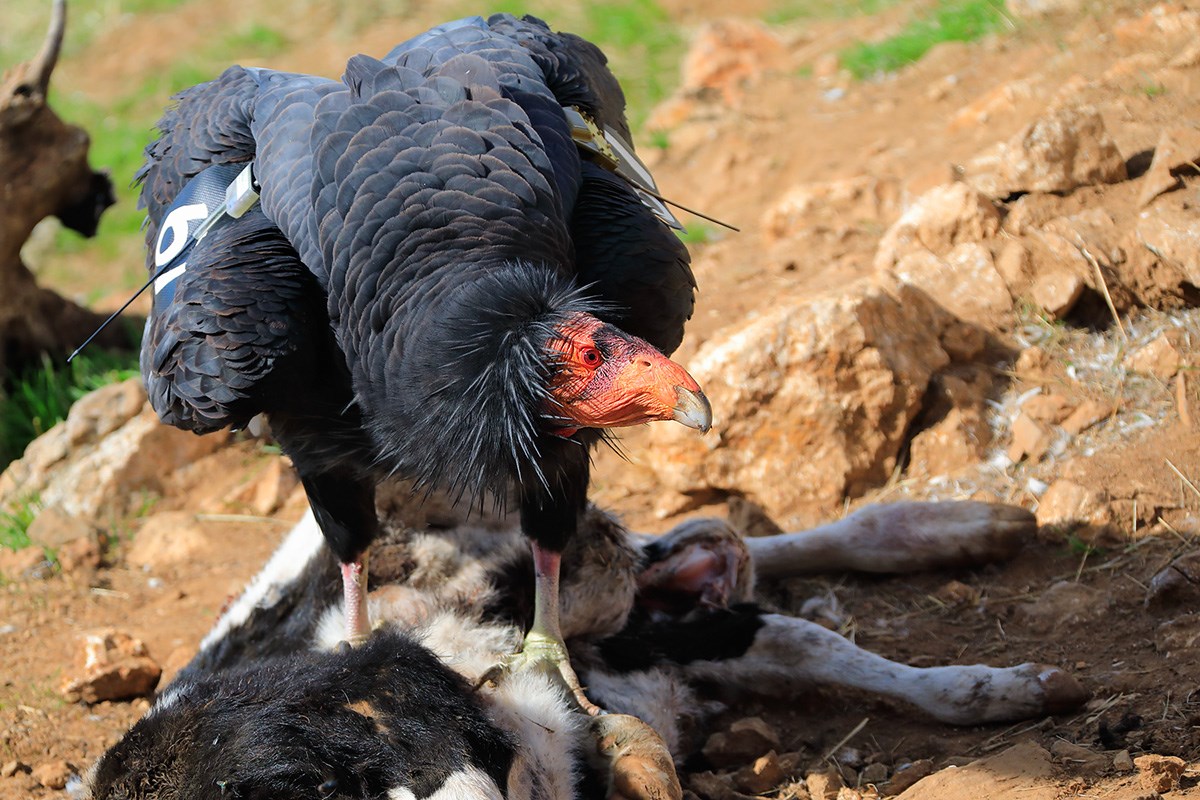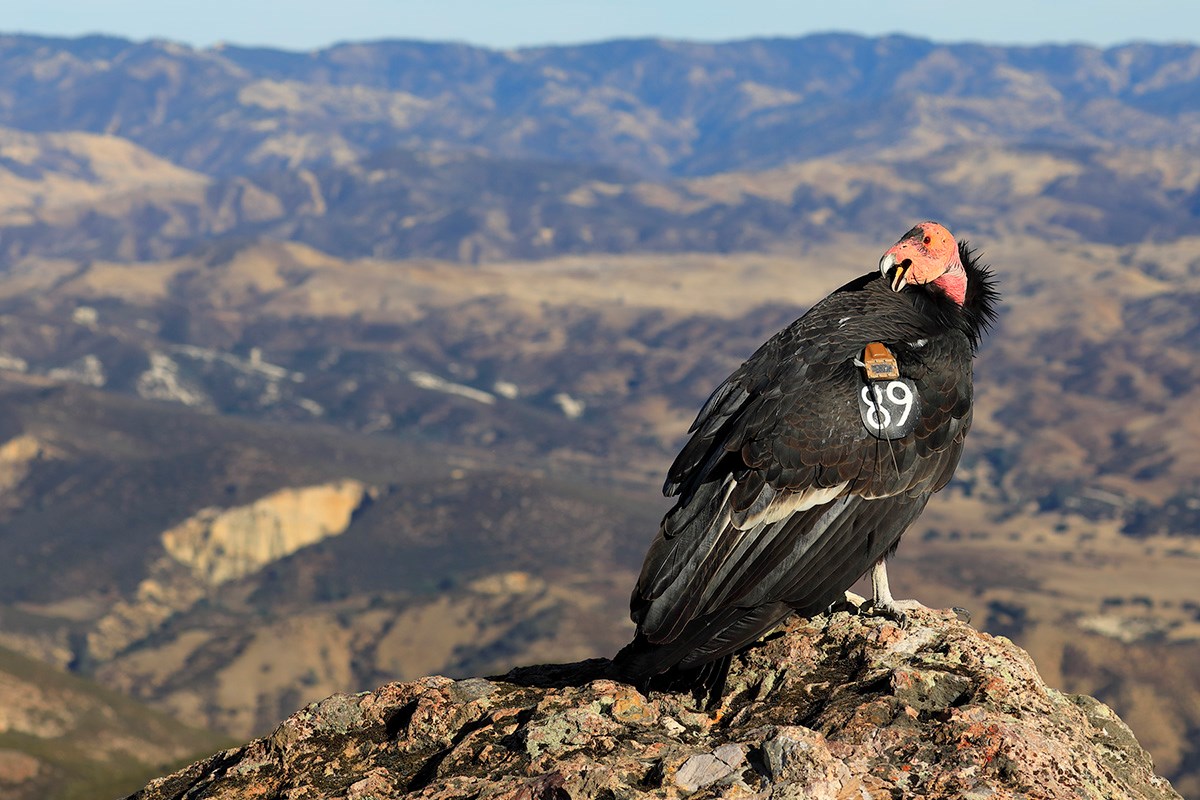Scavengers: The Clean-Up Crew
California condors provide a critical ecological service as scavengers: they only eat dead animals on the landscape. Like other North American vultures (or cathartids), condors are well-adapted for this purpose. They use their sharp, hooked beaks and powerful jaws and necks to yank, pull, and tear meat from carcasses. They are also resistant to disease and infection, and have powerful stomach juices for digesting decaying flesh. Because condors eat dead animals rather than catching live prey, they have flat padding feet (rather than the seizing talons characteristic of birds of prey).

Gavin Emmons
As scavengers, condors serve as the clean-up crew of wild and ranching landscapes. Animal carcasses can be vectors for disease transmission in humans, wildlife, and livestock. By consuming these carcasses, condors help to prevent disease outbreaks. Plants and insects also benefit from the release of nutrients that results from this process.

Gavin Emmons
Indicators of Wildland Health
In addition to keeping wild landscapes clean, California condors are also good indicators of the ecological health of wildlands and ranchlands. Condors are very long-lived birds and they reproduce slowly, averaging successfully fledged young every two years. Condors can fly many miles in a day in search of food. They are also sensitive to certain toxins (like spent lead ammunition), and nestlings are at risk from ingestion of garbage (like small bits of microtrash). Because of their far-ranging movements, longevity, slow reproduction, and sensitivity to toxins and pollution, condors are strong indicators of ecological health on the open landscapes they inhabit.As members of a high-profile endangered species, condors serve as the proverbial “canaries in a coal mine,” drawing attention to toxins and pollutants that affect many other species of birds, mammals, and wildlife. Promoting condor recovery also supports wildland health and vibrant wildlife populations in general.
Last updated: February 22, 2021
